Almond Milk Nutrition Beats Most Milks, Plus Learn How to Make
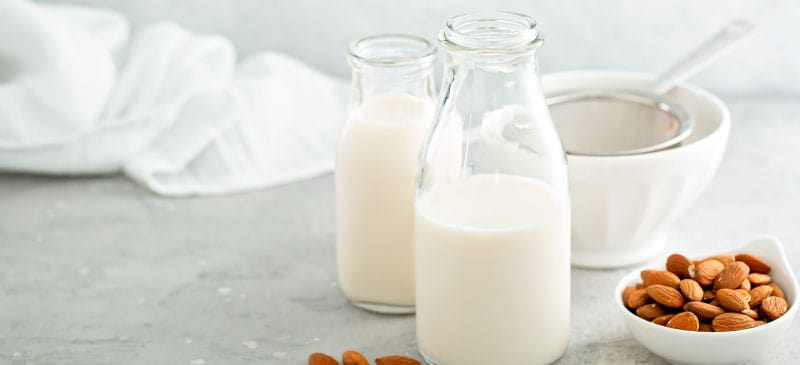
Almond milk nutrition has been cropping up in coffee shops across the country, and for good reason. This popular plant-based milk alternative is a great source of several key nutrients and has been associated with a wealth of potential health benefits.
So is almond milk bad you or can it be a healthy addition to a balanced diet? If you’re interested in finding out about some of the almond milk benefits and side effects, you’ve come to the right place.
In this article, we’ll also decode some of the key differences between a few of the most popular almond milk products on the market to help you pick the right one. It can be one of the top healthy drinks. Plus you’ll learn how to make it on your own.
What Is Almond Milk?
Let’s start with the facts: Almond milk is derived from almonds, the drupe nut (botanically, it’s actually a fruit) termed Prunus dulcis.
So how is almond milk made? The process of creating almond milk involves blending almonds and water and then using a strainer or cheesecloth to remove any solids. This gives the final product a smooth texture and a light, somewhat nutty taste.
Although almond milk doesn’t necessarily retain all of nutritional benefits of whole almonds, it can definitely be incorporated into a healthy, well-planned diet and enjoyed in moderation.
In addition to providing a number of important nutrients, it may also be linked to some serious health benefits, ranging from improved brain function to enhanced bone health and beyond.
It’s also highly versatile and a great alternative to cow’s milk for those following a dairy-free diet or those unable to tolerate milk products, such as those with a milk allergy or lactose intolerant. And not only can it be swapped into most recipes and used in place of milk, but it also makes an awesome addition to baked goods, smoothies, shakes and desserts.
Related: Is Pea Milk Healthy? Nutrition, Benefits, Uses + Downsides
Nutrition Facts
Almond milk nutrition is nothing to shake your head at. It does contain half a day’s recommended intake of vitamin E, a significant amount of vitamin D (if store-bought) and a hearty dose of calcium.
It’s also extremely low in calories compared to other milk products and can be a valuable tool if you’re trying to lose weight. In fact, the majority of calories from fat in each serving are from heart-healthy mono- and polyunsaturated fatty acids, both of which have been tied to a long list of health benefits.
One cup of store-bought unsweetened almond milk contains approximately (see how it compares to the homemade almond milk nutrition in the recipe below):
- 40 calories
- 2 grams carbohydrates
- 1 gram protein
- 3 grams total fat
- 1 gram dietary fiber
- 10 milligrams vitamin E (50 percent DV)
- 100 International Units vitamin D (25 percent DV)
- 200 milligrams calcium (20 percent DV)
- 500 International Units vitamin A (10 percent DV)
- 16 milligrams magnesium (4 percent DV)
- 40 milligrams phosphorus (4 percent DV)
Health Benefits
So is almond milk good for you? In addition to supplying a hearty dose of several essential nutrients, almond milk has also been linked to some pretty impressive health benefits.
1. May Be Beneficial in Preventing or Managing Certain Cancers
Some research shows that almond milk and its components could potentially aid in the prevention of cancer. Because of the presence of monounsaturated fats, in particular, almond milk nutrition may play a role in the potential prevention of endometrial cancer.
The consumption of high levels of monounsaturated fat is also associated with a decreased risk of liver cancer and certain breast cancer markers, according to research published in the International Journal of Cancer and Cancer Epidemiology, Biomarkers & Prevention. This is why almonds are among the best cancer-fighting foods, right alongside almond milk.
2. Aids in Weight Loss
Almond milk nutrition is very low in calories per serving, making it a great addition to a weight loss diet. Compared to goat’s milk, which clocks in at 168 calories per serving, almond milk boasts a modest 40 calories per cup.
Diets that encourage consuming healthy fats, such as the ketogenic diet or other low-carb diets, often encourage the consumption of almond milk because unsweetened varieties are low in calories, carbs and sugar.
Besides being low in calories, almond milk also has minimal impact on blood sugar levels, which can help protect against spikes and crashes and prevent increased hunger and cravings to help keep you on track towards your weight loss goals.
3. Keeps Your Heart Strong
Almond milk is jam-packed with healthy fats, including both mono- and polyunsaturated fats. By swapping the saturated fats in your diet with these nutritious fats instead, you could potentially help protect against coronary heart disease.
These fats may also reduce the risk of metabolic syndrome, a disorder characterized by a cluster of conditions, including high blood pressure, elevated blood sugar, excess belly fat and high cholesterol levels. Also known as syndrome X, this group of conditions has been shown to increase your risk of serious conditions, including heart disease, stroke and diabetes.
4. Helps Build Strong Teeth and Bones
Concerned that eliminating animal-based milk from your diet will take a toll on your bones? Not to worry — although it may not contain as much vitamin D or protein per serving as cow’s milk, almond milk nutrition is still a great source of calcium, vitamin D and magnesium, all of which play a key role in maintaining bone health.
The heart-healthy fats in almond milk may also contribute to bone health. According to an animal model published in the journal Nutrition Research, consuming a good amount of monounsaturated fats was shown to be effective at increasing calcium absorption and bone mineral density in female mice.
5. Fights Free Radical Damage and Disease Formation
Almond milk is loaded with vitamin E, a micronutrient that doubles as a powerful antioxidant. Antioxidants work by fighting free radical damage in the body, which can be caused by sun exposure, a poor diet, pollution and disease.
By consuming significant amounts of vitamin E from healthy foods like almond milk, you can help your body block the harmful effects of free radicals to ward off disease, keep your skin healthy and slow the aging process.
6. May Slow the Process of Alzheimer’s
Alzheimer’s disease is a serious neurological condition characterized by memory loss and confusion. Although there is currently no cure, researchers have been working hard finding new ways to help prevent or slow the progression of the disease, including making modifications to your daily diet.
Vitamin E, in particular, plays a key role in slowing symptoms of Alzheimer’s disease and preventing cognitive decline over time. Almond milk is a great source of this important nutrient, and each cup packs in a whopping 50 percent of the total daily value.
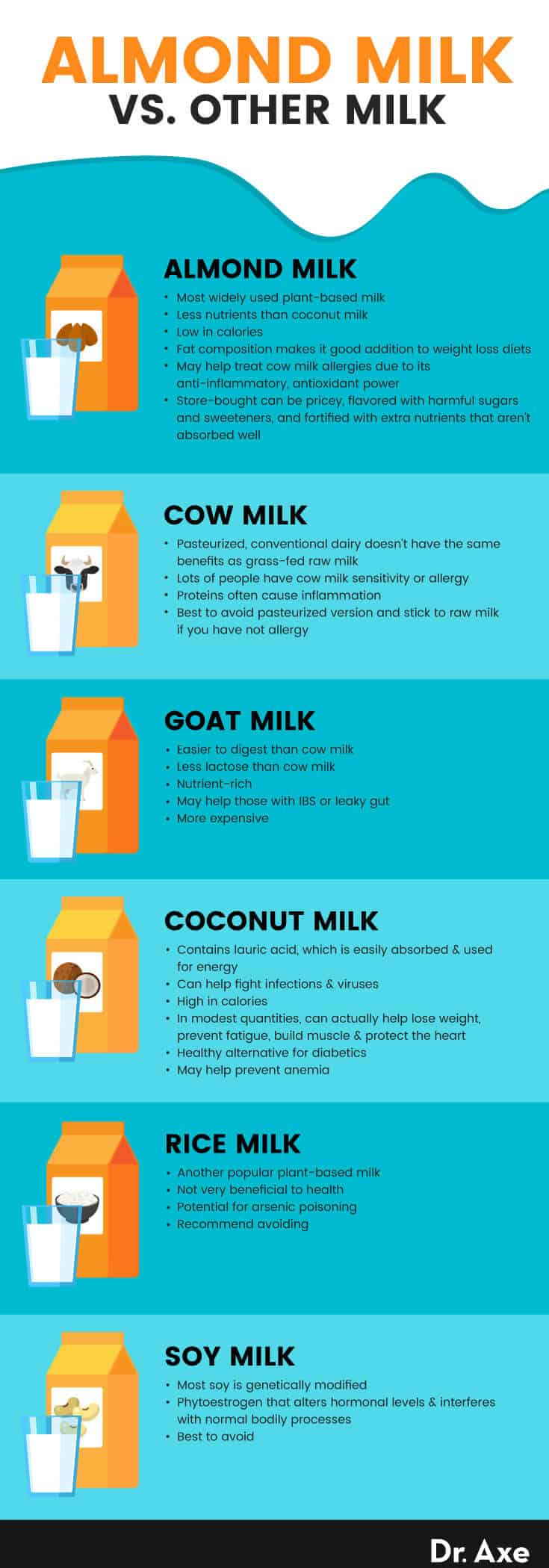
Comparisons
In addition to almond milk, there are plenty of other options for milk alternatives that you can easily add to your diet. Let’s take a closer look at some of the top contenders.
Oat Milk
Oat milk is made by blending oats with water and using a cheesecloth to extract the milk. Compared to the same serving size of almond milk, oat milk is higher in calories, carbs, protein and fiber. It also offers several micronutrients, including calcium, riboflavin, vitamin D and vitamin A.
Like other commercial milk products, oat milk often contains unhealthy ingredients, including additives and sweeteners, which may not be so stellar for your health. Additionally, although oats are naturally gluten-free, they are often processed in facilities that produce other gluten-containing grains, which can increase the risk of cross-contamination.
Cow’s Milk
Cow’s milk, or conventional dairy milk, has been in the spotlight for quite some time. Although cow’s milk is a great source of several important nutrients and may be associated with some serious health benefits, there are also some downsides to consider as well.
For starters, many people struggle with a sensitivity to cow’s milk or some of the sugars found in milk, including lactose. For this reason, it’s not a great choice for a significant chunk of the population and can cause issues like digestive distress or food allergy symptoms.
Cow’s milk may also be associated with an increased risk of other conditions, including acne, bone fractures and even prostate cancer. There are also widespread concerns with certain aspects of the dairy industry, especially regarding unsustainable farming practices and issues with animal welfare.
Therefore, it’s important to keep intake in moderation, purchase dairy products from reputable sources and enjoy as part of a healthy, well-rounded diet if you’re able to tolerate it.
Goat Milk
Goat milk is one of the most popular alternatives to cow’s milk. Not only is it easier to digest, but it also contains less lactose, is less inflammatory and boasts an extensive list of essential nutrients.
The biggest drawback to goat’s milk is generally the price. It’s much less largely produced and can be significantly more expensive than other types of milk. However, if you’re able to find reasonably priced goat milk, it’s definitely worth a try.
Coconut Milk
In addition to providing a nice nutrient load, coconut milk contains lauric acid, a medium-chain fatty acid that your body is able to easily absorb and use for energy. Because of its content of lauric acid, coconut milk may actually be able to help your body fight infections and viruses.
Real, full-fat coconut milk is high in calories, so be careful not to overindulge. In modest quantities, coconut milk can help you lose weight, prevent fatigue, build muscle and even protect against heart disease.
When searching for coconut milk at the store, look for organic, cold-pressed varieties without any added flavors or artificial ingredients. This way, you can be sure to get the most bang for your buck in terms of nutrition.
Rice Milk
Rice milk is another popular plant-based milk product. However, it doesn’t boast too many great health benefits and is made simply from rice, water and some fortified vitamins. Unfortunately, there is also a major drawback to rice — the potential for arsenic poisoning.
Overall, it’s best to enjoy only in moderation but select other alternatives when possible, including almond milk, coconut milk or goat’s milk.
Soy Milk
For years, soy milk was the go-to healthy milk option. However, there are several downsides to consider when it comes to soy milk, including the fact that nearly all soy produced in the U.S. is sourced from genetically modified crops.
Additionally, soy is a phytoestrogen, which means that it mimics the effects of estrogen in the body. While certain phytoestrogen compounds (like isoflavones) can be beneficial in some cases, those with a history of hormone-sensitive cancers such as ovarian or breast cancer may choose to avoid soy products.
How to Make
Making your own almond milk is easy and requires just a few simple ingredients. How is almond milk made? To get started with my nearly effortless but satisfying almond milk recipe, all you need are almonds, water, a blender and a cheesecloth.
The process begins by soaking almonds in water for 24–48 hours, then blending them down into a paste and juicing out the paste with a cheesecloth. (See the almond milk recipe card below.)
One reason people enjoy using almond milk is that it doesn’t require refrigeration and stays good far longer than animal milk. It’s a common ingredient in smoothies, healthy baking recipes and much more. While the taste is not the same as pasteurized cow’s milk, it can be used just like cow’s milk for consistency in most recipes.
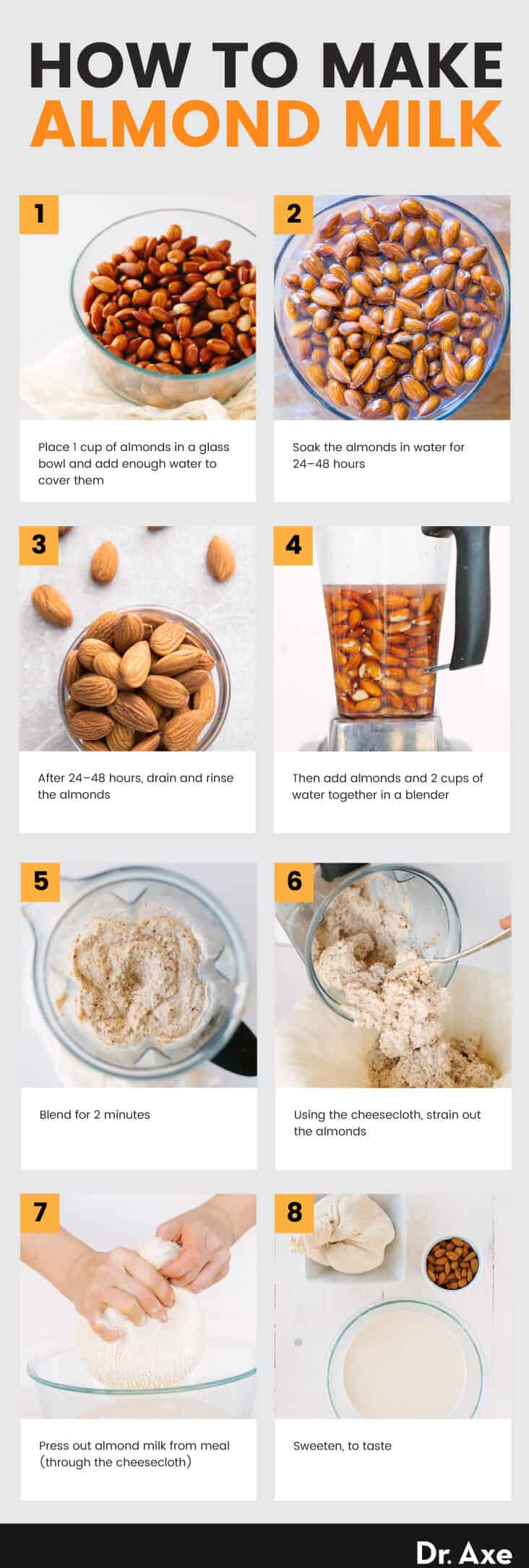
Interesting Facts
Interestingly enough, almond milk has actually been around since medieval times. Because cow’s milk spoiled so quickly without modern refrigeration, almond milk was a popular alternative. Additionally, many Christians weren’t able to drink milk from animals during Lent, the 40-day period between Ash Wednesday and Easter Sunday, making almond milk the go-to option.
In addition to its plant-based fatty goodness, many physicians praised the benefits of almond milk in the Middle Ages as well. It’s said that almond products, including milk, were prescribed to help increase sperm production. Folklore also claimed that consuming almonds or almond products the night before drinking alcohol would prevent drunkenness.
During modern times, almond milk dwindled in popularity for some time because of its limited nutritional value compared to cow’s milk. It was still produced as a specialty health food item and ranked below soy milk until it started rising in popularity in the early 2000s when some of the drawbacks of soy became more widely understood.
It finally surpassed soy milk in the health food sector in 2013 and in 2014 accounted for 60 percent of sales of plant-based milk. Today, it accounts for around 4.1 percent of overall milk sales in the United States.
Risks and Allergy Concerns
It’s important to avoid almond milk if you’re allergic to almonds or other nuts. If you experience any negative side effects after consuming almond milk, discontinue use immediately and consult with your doctor.
There have been a few reported cases of children developing kidney stones related to excessive almond milk consumption, due to the oxalate found in almonds. For this reason, it’s best to drink in moderation to avoid oxalate buildup that may cause kidney stones.
Children under one year of age should not consume cow’s milk or plant-based milk alternatives, including almond milk, as these products can potentially block iron absorption and increase the risk of nutritional deficiencies. Be sure to talk to a pediatrician or dietitian to address any questions or concerns about introducing milk to the diet after this time.
Keep in mind that not all almond milk is created equal. Store-bought or sweetened almond milk nutrition often pales in comparison to homemade almond milk nutrition, and is often filled with added sugars, flavors, sweeteners, preservatives and thickeners like carrageenan, which can do more harm than good when it comes to your health.
Final Thoughts
- Almond milk is a popular milk product that is made by blending almonds with water and using a cheesecloth or strainer to remove the solids.
- It’s low in calories but contains many important nutrients, including calcium, vitamin D, vitamin E and vitamin A. Plus it’s dairy-free, lactose-free, gluten-free and low in sugar, depending on your choice and amount of sweetener.
- Research has uncovered a number of benefits of almond milk for skin, heart health, weight loss, bone health, brain function and beyond.
- It’s important to remember that store-bought almond milk is often brimming with added sugars, sweeteners and artificial flavorings. For this reason, it’s best to try making your own at home whenever possible.
- Additionally, children under one year of age and those who are allergic to almonds should avoid this popular milk alternative.
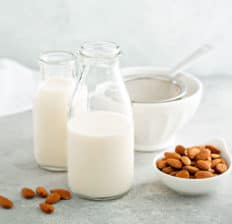
Almond Milk Recipe
- Total Time: 24 hrs 15 min
- Yield: 8 1x
- Diet: Gluten Free
Description
In this homemade almond milk recipe, the ingredients are just as they should be: just almonds and water. As a result, it’s , dairy-, lactose- and gluten-free and low in sugar.
Ingredients
- 1 cup almonds
- enough water to cover the almonds in a bowl
- 2 cups water (for blending after almonds soak)
Instructions
- Place 1 cup of almonds in a glass bowl, and add enough water to cover them.
- Soak the almonds in water for 24 hours.
- After 24 hours, drain and rinse the almonds.
- Then add almonds and 2 cups of water together in a blender.
- Blend for 2 minutes.
- Using the cheesecloth, strain out the almonds.
- Press out almond milk from meal (through the cheesecloth).
- Sweeten, to taste.
- Refrigerate. Consume within a week of making.
Notes
- Use a natural sweetener like stevia or honey to add more flavor.
- Prep Time: 24 hrs
- Category: Beverages
- Method: Blender
- Cuisine: American
Nutrition
- Serving Size: 1 glass (about 77g)
- Calories: 69
- Sugar: 0.5g
- Sodium: 1mg
- Fat: 5.9g
- Saturated Fat: 0.5g
- Unsaturated Fat: 5.4g
- Trans Fat: 0g
- Carbohydrates: 2.6g
- Fiber: 2.2g
- Protein: 3.8g
- Cholesterol: 0mg
Keywords: homemade almond milk, almond milk ingredients, how to make almond milk, how is almond milk made, how do you make almond milk,




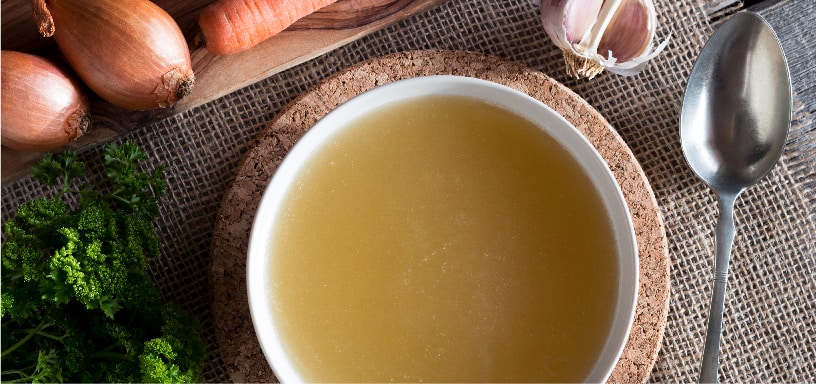
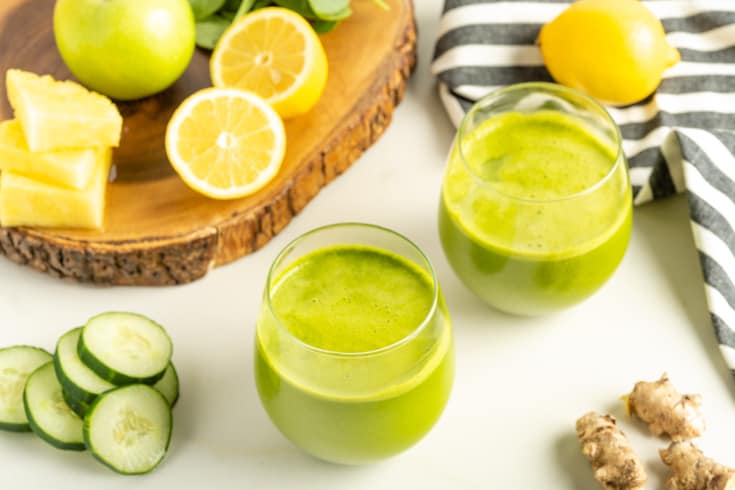



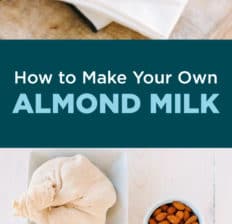
Love it, thanks for sharing your recipe. I was wondering what if I don’t strain it? I don’t mind the pulp and I actually enjoy consuming the pulp,
I like it